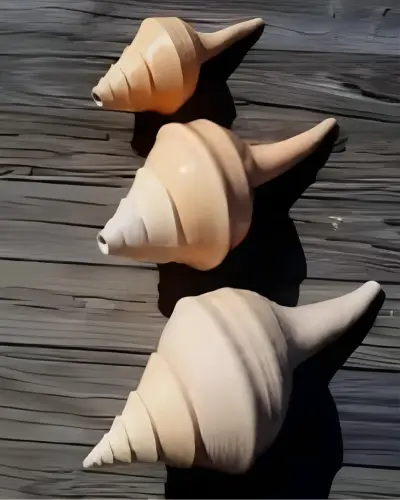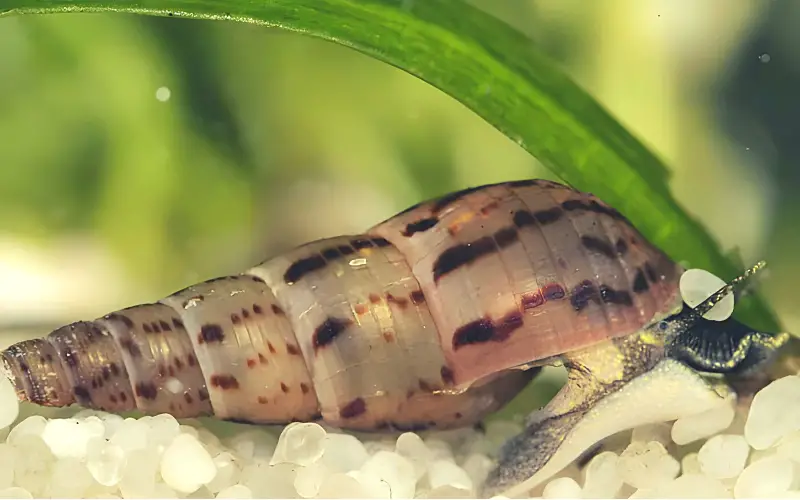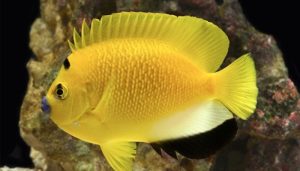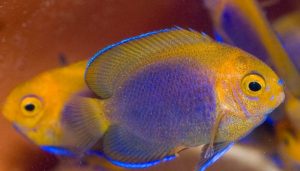Have you ever heard of the Australian Trumpet Snail, the largest living snail on Earth? This fascinating marine creature is known for its massive shell, unique feeding habits, and important role in its ecosystem. Let’s dive into its world and uncover its facts, habitat, and unique features.
The Australian syrinx aruanus snail thrives in the warm, shallow waters of northern Australia and nearby regions. It can grow over 70 cm long and weigh up to 18 kg, making it the heavyweight champion of mollusks.
This carnivorous giant feeds on marine worms, playing a crucial part in maintaining ocean biodiversity.

But there’s so much more to explore about this incredible species. How does it survive in its environment? What makes its shell so special? Let’s delve deeper into the secrets of the Australian Trumpet Snail with insights from leading marine biologists!
Table of Contents
ToggleAustralian Trumpet Snail Facts: Maximum Snail
The Australian trumpet snail holds the title of the largest extant snail in the world, with some specimens measuring nearly one meter long. Specifically, they can grow up to 91 cm in length and weigh as much as 18 kg, making them the heaviest species among shelled gastropods.
This giant snail is also known as the false trumpet due to its spiral shell, which has a distinctive whorl pattern. As one of the most extraordinary sea snails, the syrinx aruanus snail has captivated the attention of marine biologists who study its unique adaptation to its environment. Its impressive size makes it a remarkable example of how certain species can evolve to thrive in specific habitats.

Arguably the largest snail in the world, the trumpet snail is a true giant among gastropods. It presents a fascinating study for researchers and marine life enthusiasts alike because of its impressive growth and adaptation mechanisms. The shell of Syrinx aruanus is usually intricately designed, adding to its allure.
Weighing up to 18 kg, this species of extremely large sea snail demonstrates the incredible diversity of life within aquatic ecosystems. Its size not only serves as a defense mechanism against predators but also plays a crucial role in its reproductive strategies, making it an essential part of the marine food web.
The Biggest Snail In The World Is A Nearly Meter-Long Australian Trumpet
The Australian trumpet shell snail is often regarded as the biggest snail in the world, due to its astonishing size and weight. This species, which can grow to nearly a meter long, showcases the vast potential for growth in marine gastropods.
Found predominantly in the northern half of Australia, adjacent areas, eastern Indonesia coast and Papua New Guinea, this giant snail thrives in diverse marine environments.
Its elongated shell and large body allow it to maneuver effectively across the sea floor, feeding on various organisms, including polychaete worms. The Australia trumpet snail has adapted to its surroundings, showcasing how certain species can dominate their ecological niches.
As the biggest snail in the world, the Australia snail shelled is an emblem of marine biodiversity. Its size is not just a novelty; it plays a critical role in maintaining the balance of marine ecosystems. By preying on other mollusks and worms, it helps regulate populations within its habitat.
This giant snail’s impressive size also makes it a target for researchers studying the evolutionary adaptations of marine life. The Australian trumpet’s ability to grow to such extraordinary lengths, nearly a meter, highlights the adaptations necessary for survival in the diverse waters of Australia, providing insights into the evolution of gastropods in marine environments.
Syrinx Aruanus Snail Habitat
The habitat of the Australian snails is primarily located along the coastal regions of Australia, particularly in the northern half and adjacent areas. This species of extremely large sea snail prefers sandy and muddy substrates where it can burrow and find food. The sea snail is typically found in shallow waters, where it can easily access a variety of prey.
The Australia trumpet snail is not only a remarkable creature due to its size but also for its adaptability to various marine environments, including coral reefs and seagrass beds. Its habitat plays a crucial role in its feeding habits and overall life cycle.
Inhabiting diverse marine environments, the habitat of the Syrinx aruanus reflects its adaptability and ecological significance. These gastropods favor locations where they can easily camouflage themselves among the sea floor’s sandy and muddy surfaces.
The presence of polychaetes and other marine organisms in these areas provides a vital food source for the Australian trumpet snail. Additionally, its habitat supports various other species, showcasing the interconnectedness of marine ecosystems.
By thriving in these environments, the trumpet snail contributes to the biodiversity of its habitat while also demonstrating the adaptability of mollusks to varying conditions in the ocean.
Malaysian Trumpet Snails Australia Unique Features
The Australian trumpet shell snail, also known as the false trumpet, boasts several unique features that set it apart from other marine gastropods. One of its most distinctive characteristics is its spiral shell, which can reach impressive lengths and has a unique whorl pattern.
This shell serves as both a protective barrier and a buoyancy aid as the snail navigates its underwater habitat. The proboscis of the Australian trumpet snail is another fascinating feature, allowing it to feed on various organisms found on the sea floor, including worms and other mollusks. These adaptations enable the snail to thrive in its environment and showcase the complexity of marine life.
Among the unique features of the Australia snails, its spiral shell is arguably the most notable. This shell not only provides protection but also serves as a striking example of natural design in marine species. The whorls of the shell can vary in shape and size, creating an attractive appearance that captivates marine enthusiasts.
Furthermore, the proboscis, a specialized feeding structure, allows the malaysian trumpet snails Australia snail to consume a wide range of food sources, showcasing its adaptability. As a species, the Australian trumpet snail highlights the incredible diversity of life in the ocean and the various adaptations that enable it to survive and flourish in its unique habitat.
Conclusion
The Australian trumpet snail, or Syrinx aruanus, is an extraordinary example of marine life, distinguished by its impressive size and unique features. As the largest extant snail in the world, this giant gastropod plays a vital role in its ecosystem. Its habitat preferences and feeding mechanisms illustrate the adaptability of marine species to their environments. The trumpet snail not only captivates our imagination with its size but also serves as a reminder of the importance of biodiversity in our oceans. Protecting such unique species is crucial for maintaining the delicate balance of marine ecosystems, ensuring that future generations can continue to marvel at these remarkable creatures.
In conclusion, the syrinx aruanus snail is a vital part of marine biodiversity, showcasing the incredible adaptations and features that allow it to thrive in its environment. Its status as the biggest snail in the world emphasizes the need for conservation efforts focused on marine habitats. By understanding the unique aspects of the Australian trumpet snail, we can appreciate the complexities of marine life and the importance of preserving it for future generations. This giant sea snail not only contributes to its ecosystem but also serves as a symbol of the wonders that lie beneath the waves, deserving our respect and protection.
See also More posts you may like to read
- Malaysian Trumpet Snails 101: A Comprehensive Care (Guide)
- How Big Do Malaysian Trumpet Snails Get: (Expert Guide)
- Are Malaysian Trumpet Snails Good or Bad: (Pros and Cons)
- Can Malaysian Trumpet Snails Live Out of Water: (Answered)
- Tarebia Granifera Aquarium 101: (A Comprehensive Guide!)
- Malaysian Trumpet Snails Aquarium Size: 5 HUGE facts you NEED to know




